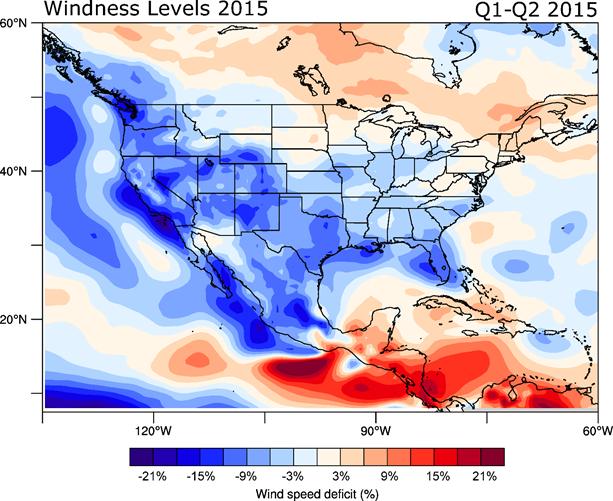The unprecedented drop in windiness affecting vast swaths of the U.S. in 2015 cannot be explained by the impacts of El Niño, claims a new report from DNV GL.
“Advanced analysis reveals more complex causes,” explains Daran Rife, whose DNV GL mesoscale modeling team of atmospheric scientists and wind power engineers conducted the study.
According to Rife, here’s the true source of the wind drought: “A high-pressure ridge of unprecedented proportions and longevity, which formed and sustained itself from June 2013 to June 2015.”
The study – Whither the Winds in 2015? – finds that a mass of warm Pacific water nearly the size of the contiguous U.S. caused the high-pressure system.
“While such systems are typically associated with lower levels of wind, they rarely last longer than a week,” says Rife.
The report says the resulting drop in wind levels – a wind drought not seen since before 1979 – affected states from Washington to Florida and caused wind power output to fall dramatically short of expectations.
In 2015, says DNV GL, California, Oregon, Washington, Nevada, Arizona, southeast Texas and Florida were among the regions reporting their lowest recorded wind levels in more than 25 years.
“As the U.S. increasingly looks to wind power to contribute a greater proportion of energy resources, there’s a great need to understand the complex factors of climate and weather that shape wind output,” says Rife.
“This study advances that body of knowledge in practical ways – supporting future forecasting accuracy and providing greater reliability to wind production estimates for power systems planners and investors.”
The full report, including wind power projections for 2016 and beyond, can be downloaded here.





